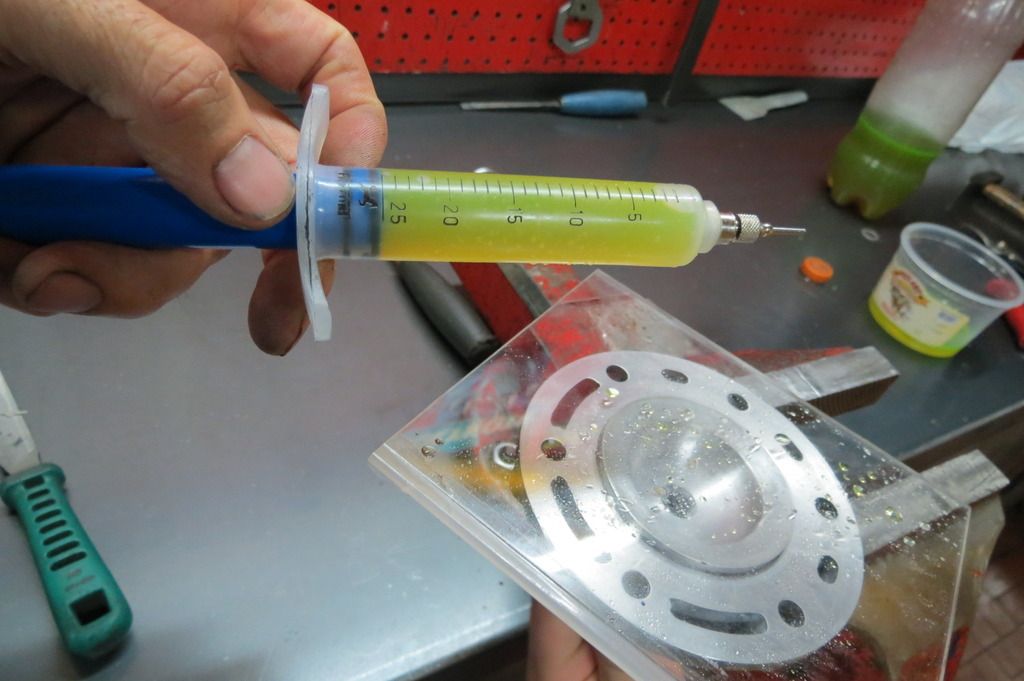Simmo737
Gold Level Site Supporter
This all starts when I bolted on an s3 high high head on my 2011 ec300e it comes with no jetting help.
Get some advice from Scotty's spares who say try a touch richer.
I have a 36 mm ASII kehin carb, the stock jetting I received was 40 N1EG 175 which is good for a stock 300 with 38 mm carb...rich for the stock 36mm due to its restricted size and higher vacuum speed (thank you mr Bernoulli) or "signal".
The 36 usually needs one step richer on the needle as well.
Bolt the the higher comp, tighter squish head on and its about right, good plug colour etc, but not a great needle imho. Good idle though, no run on into corners, no hang just dung dung dung.
I go buy a jd kit.
In goes the blue needle pj and mj one step richer than his recommendations, 40 pj all good except idle, go up to 42 pj and good idle. It's better than stock and is apparently close to or the same as the n3ch yammy needle. Very grunty.
Jakobis Suzuki needles and his thorough research spike my interest as I'm after a linear needle for tight st and logs etc. it's pretty different being lean lean rich instead of rich lean like the jd/n1
I can't get a stable idle at 42pj with this leaner again needle and get a rich bog with any more than a 165 main, so I go to 45pj, clip 2 165 and idle, plug and response is perfect and I can vary my jetting with the airscrew for alt temp.
Rm 250's have roughly the same comp ratio as the s3 head and a 38 mm carb, so they should be I step richer than me except the needle which should be one step leaner.
I found that united states stock rm 250 jetting is 50 clip 3 NECJ 168, and in SoCal ( much like my climate) they use 45/48 clip 2 NECJ 168/5. Seems to validate my jetting. Yammies also seem to use bigger pj's.
Imho our motors are more like jap motors than ktms for jetting, ktms some how can use super lean pilots, I don't think we can.
Get some advice from Scotty's spares who say try a touch richer.
I have a 36 mm ASII kehin carb, the stock jetting I received was 40 N1EG 175 which is good for a stock 300 with 38 mm carb...rich for the stock 36mm due to its restricted size and higher vacuum speed (thank you mr Bernoulli) or "signal".
The 36 usually needs one step richer on the needle as well.
Bolt the the higher comp, tighter squish head on and its about right, good plug colour etc, but not a great needle imho. Good idle though, no run on into corners, no hang just dung dung dung.
I go buy a jd kit.
In goes the blue needle pj and mj one step richer than his recommendations, 40 pj all good except idle, go up to 42 pj and good idle. It's better than stock and is apparently close to or the same as the n3ch yammy needle. Very grunty.
Jakobis Suzuki needles and his thorough research spike my interest as I'm after a linear needle for tight st and logs etc. it's pretty different being lean lean rich instead of rich lean like the jd/n1
I can't get a stable idle at 42pj with this leaner again needle and get a rich bog with any more than a 165 main, so I go to 45pj, clip 2 165 and idle, plug and response is perfect and I can vary my jetting with the airscrew for alt temp.
Rm 250's have roughly the same comp ratio as the s3 head and a 38 mm carb, so they should be I step richer than me except the needle which should be one step leaner.
I found that united states stock rm 250 jetting is 50 clip 3 NECJ 168, and in SoCal ( much like my climate) they use 45/48 clip 2 NECJ 168/5. Seems to validate my jetting. Yammies also seem to use bigger pj's.
Imho our motors are more like jap motors than ktms for jetting, ktms some how can use super lean pilots, I don't think we can.
Last edited:

